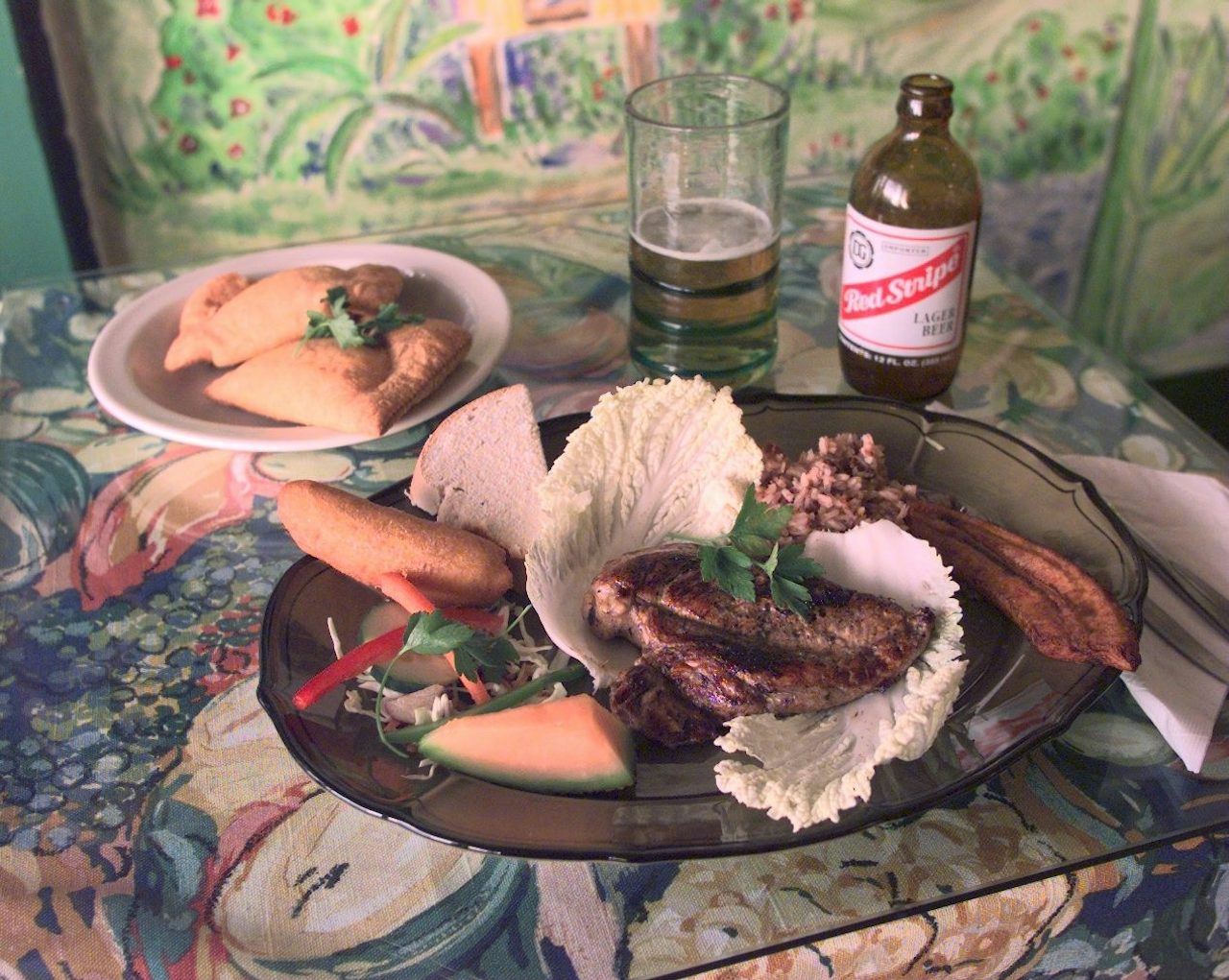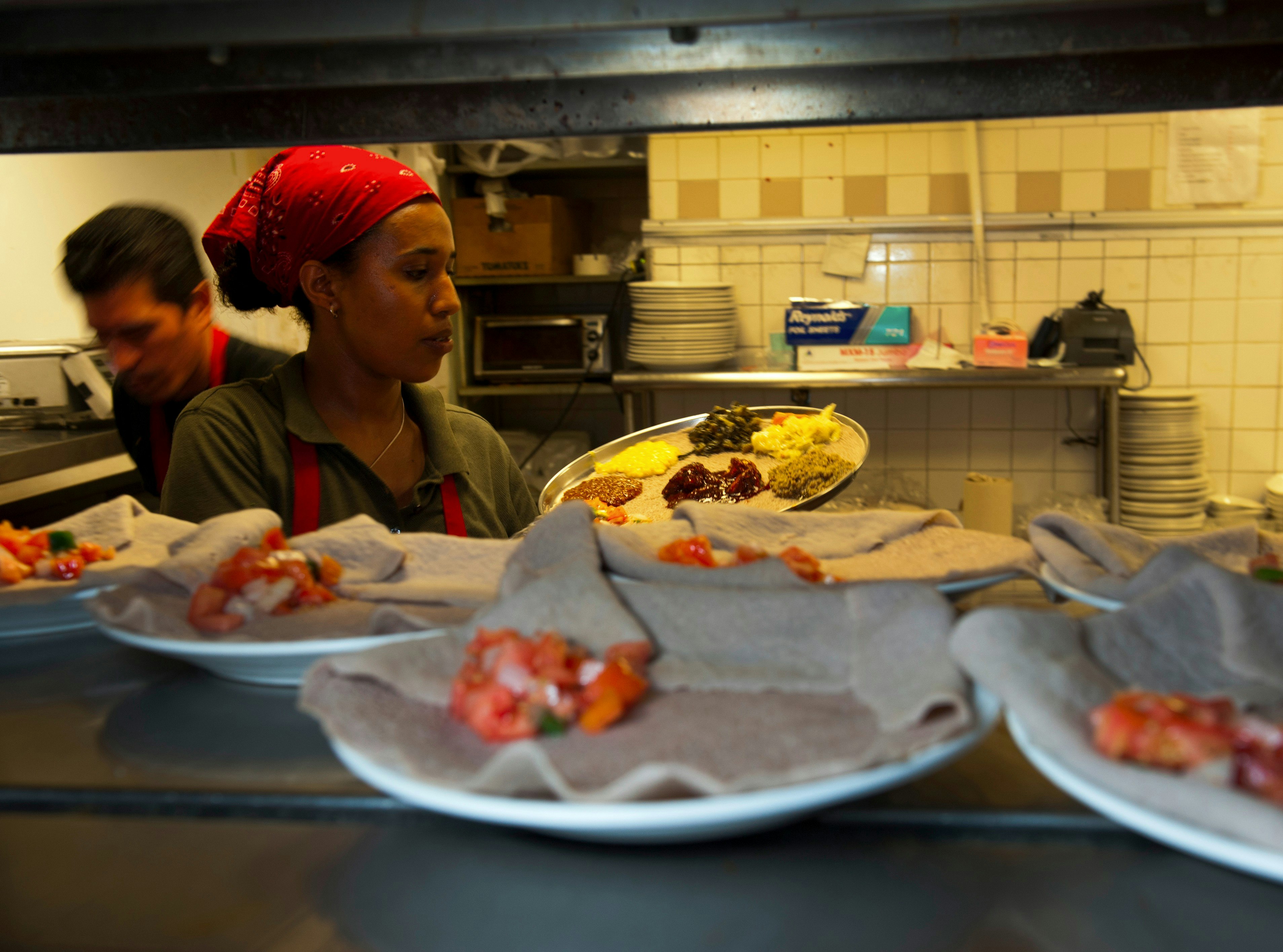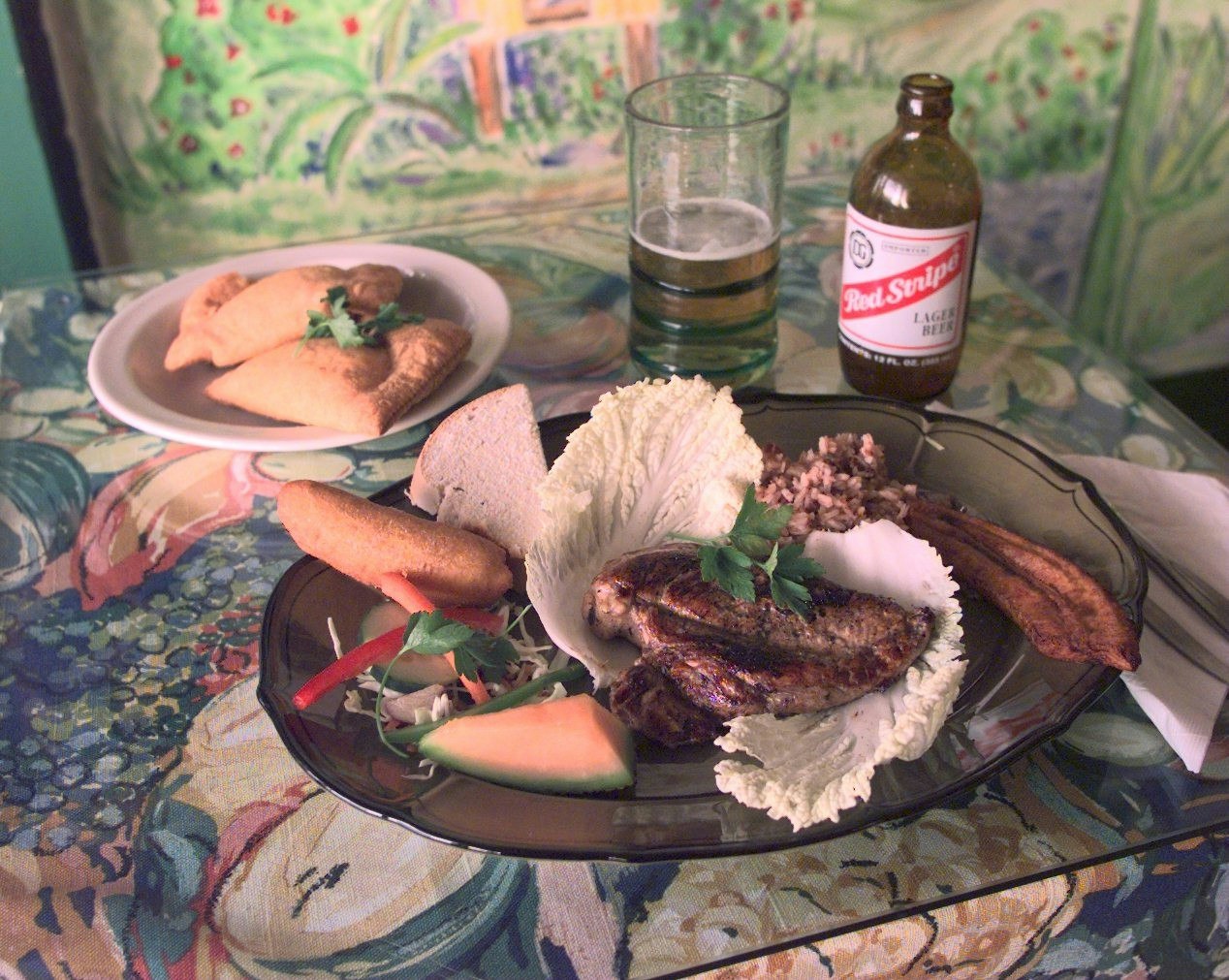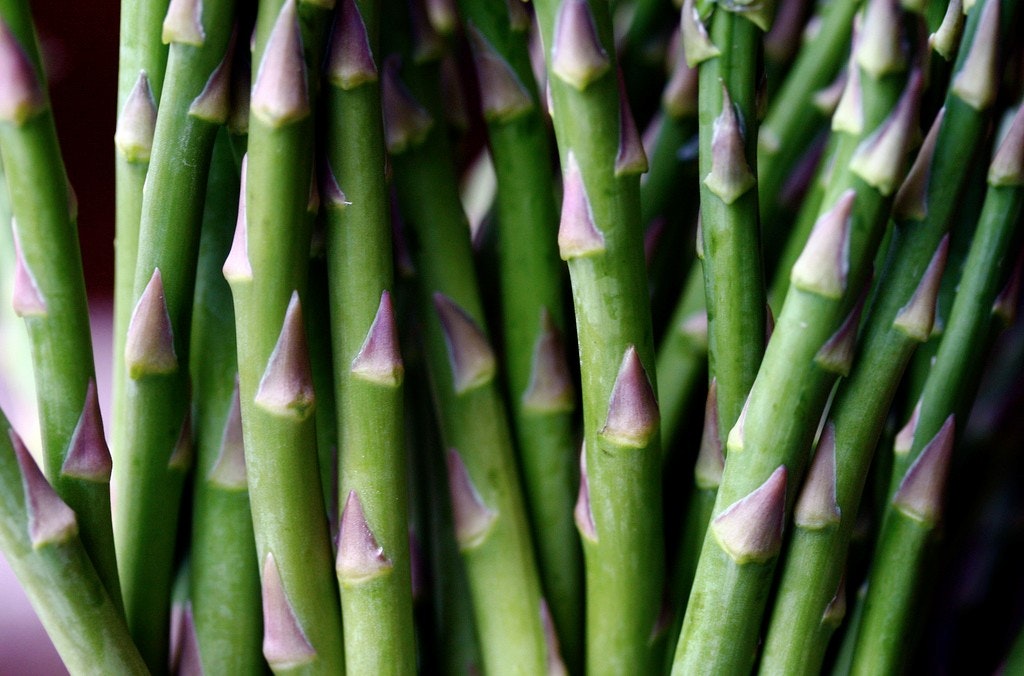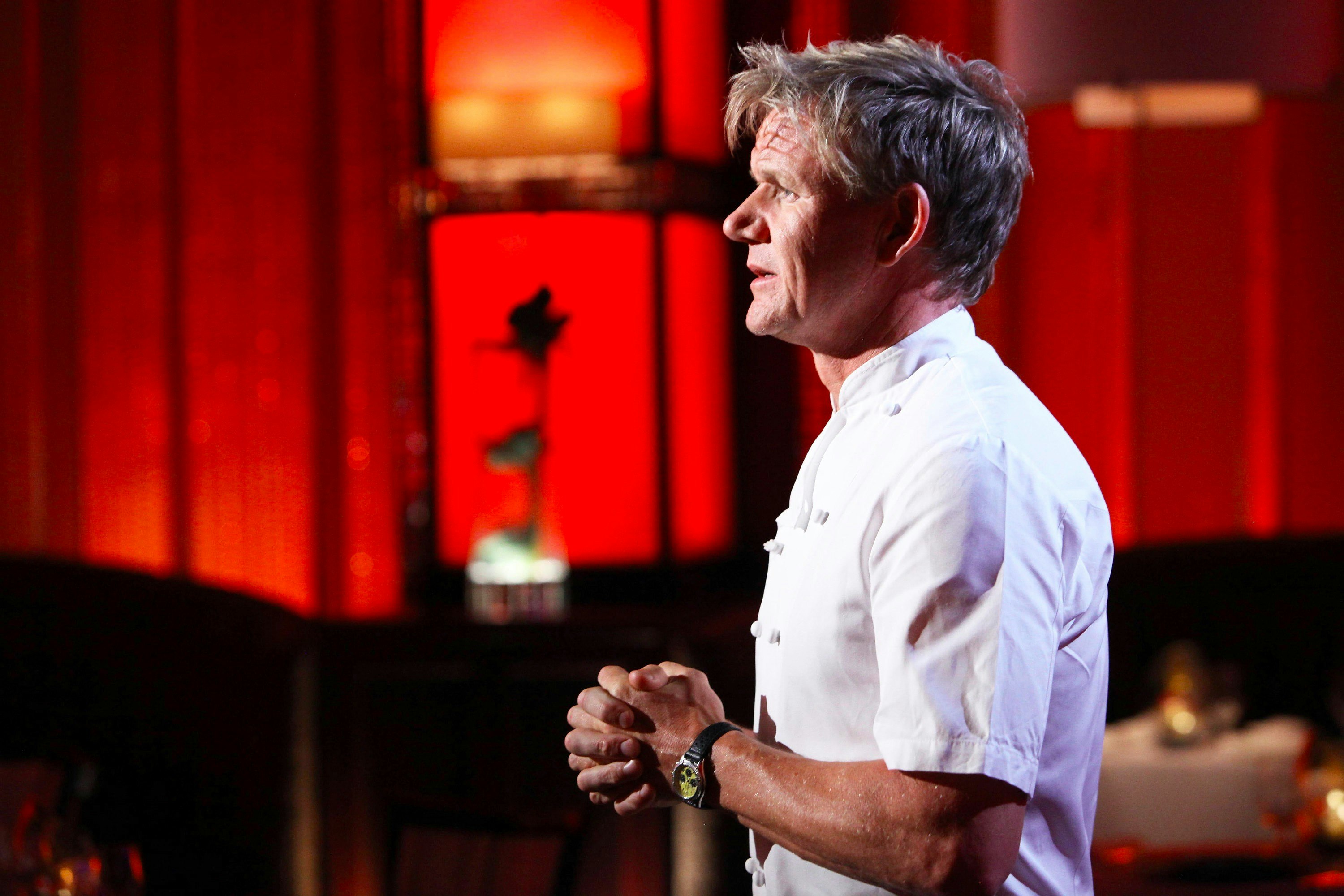The Jamaican beef patty has officially reached the mainstream, according to a recent article from the New York Times. “It may not be as popular as the taco or the pizza, but it could be on its way,” the paper declared. The pastry has been enjoyed in Caribbean immigrant communities in the US for decades; one bakery and restaurant chain, Golden Krust, was founded in 1989 and now has 120 locations and sells frozen patties via retailers across the country. But now, thanks to the work of Jamaicans who built successful businesses selling patties, people outside the community have begun selling the food too. Patties are a bona fide food trend, and the Times article itself only confirmed that.
The reaction from Jamaican-Americans and other people of color was swift and immense. On one side were folks proud that their culture, and by extension their community, was finally gaining the recognition it deserved. But on the other side were people exhausted to find that yet another part of their culture, something as personal as food, was being co-opted to appeal to white people. “Wow they finally bout to come gentrify beef patties,” tweeted one person. “Damn it. White folk done found Jamaican patties. Come soon, Lord. Come soon,” tweeted another.
For some people, the Times article was just another instance of witnessing foods for which they were once ridiculed for bringing to work or school, being designated as trendy. Ethiopian food hit it big with American foodies around 2012. Pho, a Vietnamese noodle soup, was the “it” food of 2016 after a steady, multi-year rise in popularity. And poke, a Hawaiian raw fish dish long popular on the islands, has been sweeping the continental US for the past few years. And with each widespread wave of interest in these foods came their treatment as a newly-discovered sensation without history or cultural meaning.
A handful of food trend lists published last year predicted that already-bubbling food developments poised to take to take over the country in 2017 included such innocuous things as delivery-only restaurants and foods that are purple. But also on those lists were specific cultural selections: Filipino food, (according to several outlets including Food Network and Bloomberg); Japanese tataki-style cooking, (according to the James Beard Foundation); and “Middle Eastern flavors,” according to Parade. The National Restaurant Association, a business association and D.C. lobbying group representing the restaurant industry, went even broader with its annual year-end “culinary forecast.” Based on an online survey of 1,298 professional chefs belonging to the American Culinary Federation, it declared that items like house-made charcuterie, condiments, sausage, and pickles are sweeping the food scene right now. But the top 20 list also included “ethnic-inspired breakfast items” (on the list since 2011), “African flavors” (whatever those are), “ethnic spices,” and for the second year in a row, “authentic ethnic cuisine.”
Food trends aren’t in themselves bad or new. The world is arguably a more tolerable place to live in with the cronut in it. And foods that are now considered American, like the hot dog and the pizza, were once “ethnic” food trends themselves. In his 2016 book The Ethnic Restaurateur, New York University nutrition and food studies department chair Krishnendu Ray explains how the term “ethnic” began to be used in the 1950s as a stand-in for “foreign” in food writing. But today, when it comes to cuisines and restaurants, the word more closely implies “non-white” and inexpensive. “When we call a food ethnic,” Ray told the Washington Post’s Roberto A. Ferdman last year, “we are signifying a difference but also a certain kind of inferiority.” The desire for “authentic ethnic cuisine,” for example, comes with a troubling social assumption that those foods should be cheaper than mainstream American cuisines.
“I’m hoping that we get to the stage where we respect authentic food financially as much as we do socially.” — Pelin Keskin
And while restaurateurs, chefs, and food journalists from immigrant communities of color are gaining more recognition, restaurant institutions’ insistence on “trendifying” ethnic foods is an example of the colonization attitude that is still present in the food world. It’s not so much that an ethnic food being proclaimed a trend signals the sudden arrival of a certain culinary development in the US. Rather, it signals that an immigrant community, likely after much struggle, has established itself enough for a restaurant or group of restaurants to succeed with a customer base made up of members of that community. Such popularity is followed by curiosity from folks outside of that culture, perhaps sped up by the gentrification of immigrant-populated neighborhoods in major cities. But the harm comes when that curiosity is characterized as a “discovery,” made trendy, and monetized in ways that don’t benefit the communities which created them. Furthermore, when the cuisine of an immigrant community becomes a trend, it can signal that certain foods will be watered down to appeal to white consumers.
Some people in the food and restaurant world have argued that increased attention on cuisine produced by immigrant communities ultimately benefits the people and cultures involved. “Ethnic food trends broke down barriers of language and race and made the exotic every day, the foreign familiar,” writes David Sax, a Toronto-born white man, in his 2014 book The Tastemakers: Why We're Crazy for Cupcakes but Fed Up with Fondue. “Ethnic food trends can open up minds. Taste something you like, and suddenly you find yourself wanting to discover more about that culture’s cuisine.” But with so little focus on the people who created those cuisines, trends like “authentic ethnic cuisine” and “African flavors” elevate a privileged consumer rather than those whose labor they are seeking out. This is especially true when people from outside an immigrant community profit off of monetizing that community’s culture.
“It really is tokenization,” food journalist Pelin Keskin told The Outline. “There’s just something super uncomfortable about someone from another race who doesn’t understand the cultural nuances ... speaking for you or cooking the food that’s so personal.” Keskin traced increased mainstream curiosity with immigrant communities’ cuisines to chefs and restaurateurs’ boredom with continuously trying to perfect classic French and Italian techniques. And while she thinks that curiosity is only natural, especially for people in big-city immigrant hubs like New York, food trends that don’t financially benefit the communities in which they originate only exacerbate the conditions which facilitated their marginalization in the first place. “Put aside the psychological emotional implications of it for the community. Financially, ‘ethnic’ food trends are weird. It sets the balance off, it brings the power back to the wrong person.” said Keskin. “Even though I do appreciate the seeking out of ‘authentic food,’ I’m hoping that we get to the stage where we respect authentic food financially as much as we do socially.”
Immigrant food community “discoveries” wouldn’t feel so uncomfortable if the places promoting those narratives were quicker to show support for the people whose cultures are being mined for trends. For example, Thai food has been making its way into the mainstream for decades. And culinary arts nonprofit The James Beard Foundation has been recognizing people attempting to do good work in the cuisine. In 2003 chef David Thompson won a James Beard Award for his cookbook Thai Food, which he wrote after going to Thailand on vacation “by mistake.” But it wasn’t until 2011 that an Asian-born chef won a James Beard Award. Last year food writer, chef, and host of food podcast Racist Sandwich Soleil Ho analyzed the list of 2016 James Beard Award nominees and found that people of color are vastly underrepresented as JBF nominees and award winners compared to how much of the industry people of color comprise.
Meanwhile, the National Restaurant Association, the organization that predicted “ethnic” foods as a trend this year, has supported a path to citizenship for undocumented immigrants in the past, but hasn’t recently publicized that stance as ICE raids and deportations have picked up under Donald Trump. In February, NRA vice president of communications Leslie Shedd told Fox News that “A Day Without Immigrants” organizers encouraging a nationwide boycott effort were “disrupt[ing] the workplaces of hard-working Americans who are trying to provide for their families.” Earlier that month, the organization issued a flimsy statement vaguely opposing the order and encouraging an approach that “balance[s] our safety and security with the importance of the economic contributions of travel and tourism to our country.” Additionally, a large chunk of the NRA’s political work is taken up by lobbying against minimum wage increases across the country.
The tokenization of immigrant communities will only continue as consumers continue to be curious in their dining and eating habits. And while Americans’ conception of immigrant communities of color may not change, those communities’ ideas of what success in the US means could. “The service industry is not what most [immigrant] parents want their kids to get into,” said Keskin when I asked if any good could come of this. “This weird, annoying popularity that’s super voyeuristic, I’m hoping that it encourages more immigrant kids to understand they can be the representatives of their culture, of their cuisine.”
